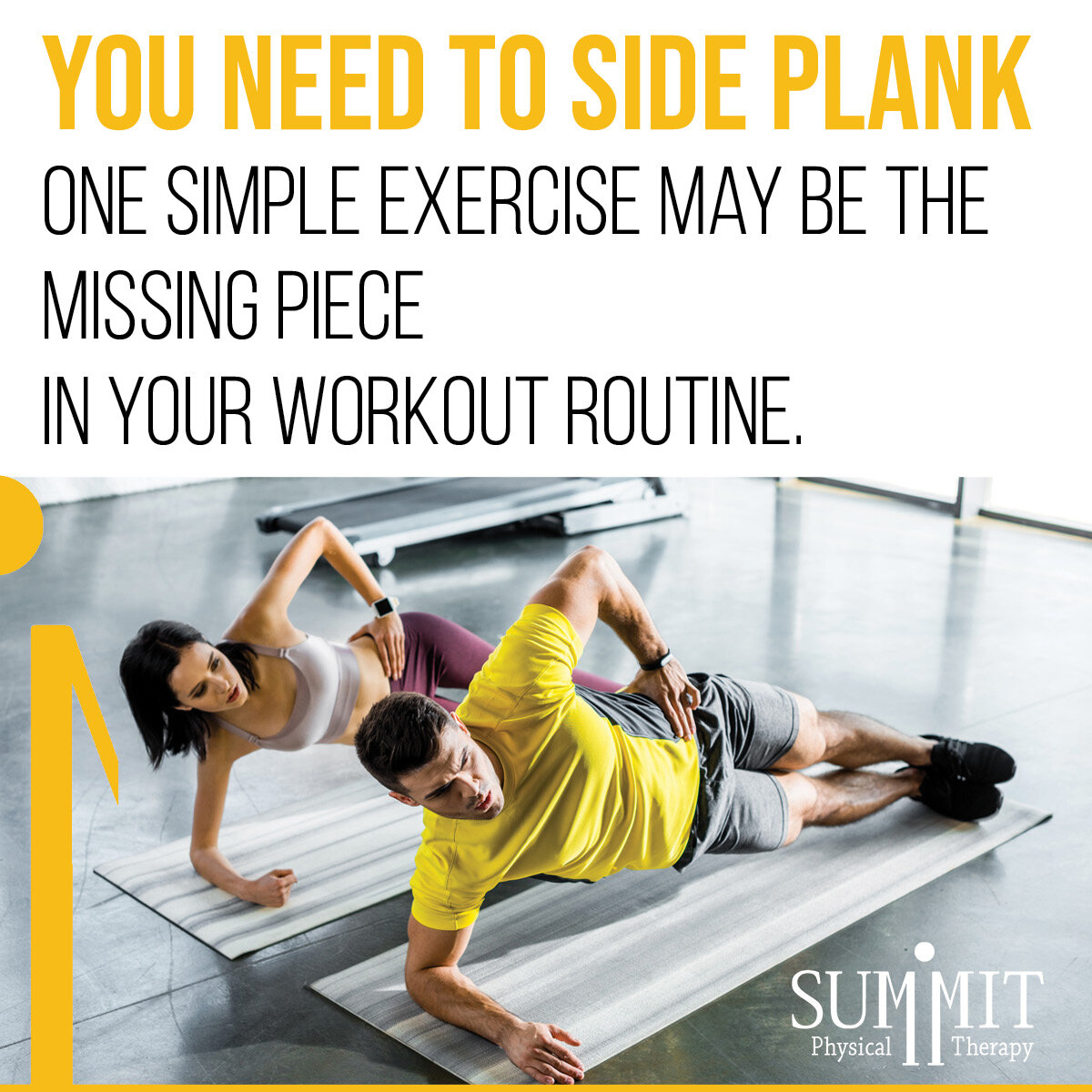You Need To Side Plank
One simple exercise may be the missing piece in your workout routine.
Ah yes, the dreaded plank. A favorite amongst those of you who like to suffer for their workout while being dreaded by the rest of us. There is usually no shortage of front planks in any core or abdominal routine, but how often do you find yourself doing a side plank?
I hope that this does not apply to you, but side-to-side (lateral) movements tend to be forgotten about in most of our workout routines. Think about most exercises and the direction of forces that you generate: running, bench press, squat, deadlift, bicep curl, sit ups, row, stair climber, cycling… All forwards-backwards exercises. You would even be hard pressed to find a lateral resistance machine at a gym, save for a hip clamshell or shoulder side raise machine. It is true that many daily (functional) movements are forward, and you should definitely train and exercise with that in mind, but never neglect the other directions! Now I will get nerdy to explain why.
For most day to day functions, your lateral strength is not directly tested, but those muscles (the lateral chain) are used to stop you from falling over with any single legged activity. This is pretty important considering walking and going up or down stairs are primarily single leg activities! For a simplified example, when standing on your right leg, three major muscles kick in to stop you from falling to the left. Your obliques stop your low back from flopping to either side. Your gluteus medius stops the opposite hip from dropping towards the floor like a sassy hip. Lastly, your peroneal muscles on the side of your calf let you push through your big toe to not roll on the inside of your foot.
If you play a rotational sport like golf, tennis, or baseball, you should consider a specific training program to develop strength and power in the lateral chain. For the rest of us, we may not need as much power as a baseball pitcher, but we do need enough strength for proper stability and maybe even injury risk reduction. The aforementioned gluteus medius plays a very important role in stabilizing the hip, knee, and ankle joints from undergoing too many side-to- side forces. As far away as the hip is from the ankle, you might imagine how this lateral chain strength could help with ankle sprains!
To keep things simple on the training end, try and add some type of side plank at the end of each of your workouts. Always start with a few repetitions and never a long hold until your form is perfect. Here is a progression to try:
Side plank on knees with knees bent to 90 degrees
Side plank on knees lifting top leg
Full Side plank
Full side plank lifting top leg
This is an ultra simplified progression that may not be appropriate for all people, but could be a great starting point for most. Hopefully this information helps you plan your next workout and not miss any forgotten muscle groups!

